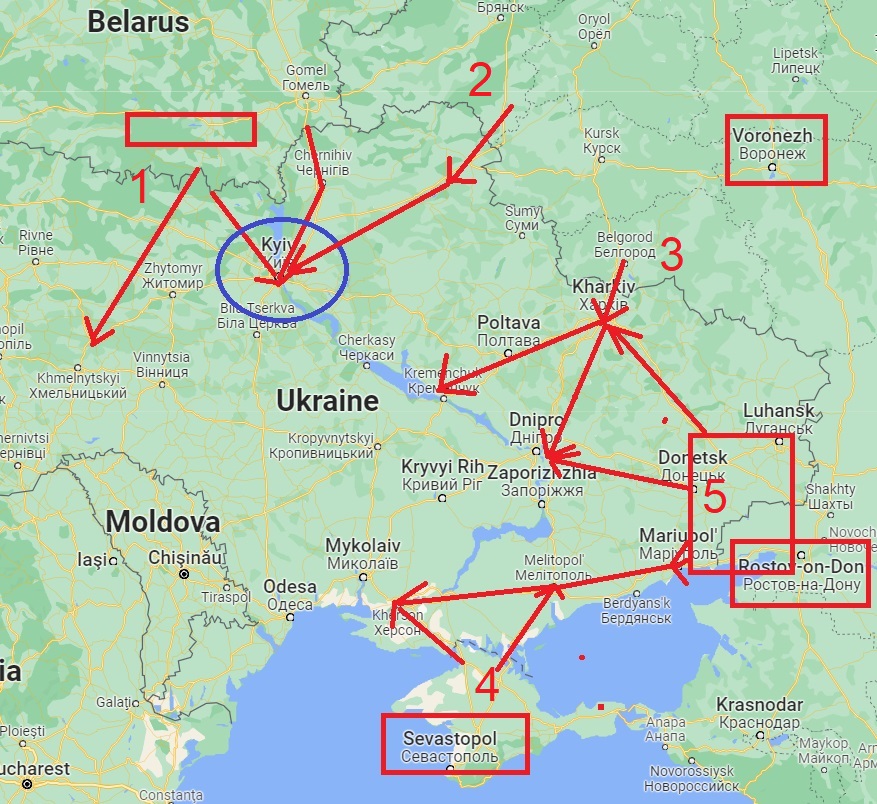Russia is significantly escalating its political and military pressure on Ukraine and the West. As an extension, Russian ground forces and equipment also have begun arriving in Belarus.
Belarus and Russia say these forces will conduct joint exercises come February. In reality, their deliberately overt arrival affords Vladimir Putin the means to threaten and/or conduct a wide spectrum of war plans against Ukraine.
At the most basic level, Russia’s new military deployments force Ukrainian forces to grapple with the prospect of a new northern front. Consider that Russian forces are already deployed along Ukraine’s northern border with Russia, in Crimea, and in the Russian-proxy Donbas enclave. Either alongside the Belarusian military or alone, Russian forces in Belarus could now complete a north-south-east-based offensive against Ukraine. This disposition of forces is ominous.
The type of forces deployed also illustrates the threat.
The newly arrived ground forces join advanced Russian and Belarusian Su-30 air superiority fighter jets already based in Belarus. (These jets have engaged in recent, escalated joint training.) At the same time, Russian armored and helicopter assault forces are holding just across Ukraine’s northern border with Russia. To the south, a range of Russian rapid-maneuver infantry and air-to-ground specialized strike jets are based in Crimea. Russian special forces are also directing pro-Russian rebels in the Donbas. My annotated Google map below shows the rough baseline from which Putin now operates. The five boxes illustrate approximate areas where Russian command groups would likely be based in any reinvasion of Ukraine. Kyiv is circled in blue, and the arrows represent possible offensive routes against strategic targets.

Sources and geography tell me that the threat is clear.
From Belarus (#1), Russian forces could move under air cover, past Chernobyl, and against Kyiv (only a 2.5-hour drive from the border). Armored forces south of Bryansk (#2) could further attack toward Kyiv from the northeast, threatening the capital’s encirclement. Combined arms forces around Belgorod (#3) could seize or encircle the city of Kharkiv, then push toward the Dnieper river. This is the major invasion option, one that would see Ukraine exist only as an extension of a new greater-Russian-union state.
From Crimea (#4), forces could push north to the Dnieper, holding the Ukrainian Black Sea port city of Kherson at risk. These forces could simultaneously attack eastward toward Melitopol, then linking up with forces attacking westward from the Donbas (#5), which had seized Mariupol. This Crimea-Donbas offensive would allow Russia to establish a contiguous land corridor from Russia across Ukraine to Crimea and dominion over the Sea of Azov. Importantly, it would also allow Russia to address Crimea’s water shortage crisis. Of course, Putin may envelop the Crimea-Donbas offensive as part of any action to secure Ukraine in its entirety.
Some or none of this may occur. We also must not forget that the Ukrainian military is improved in capability and possesses greater morale and resolve. Russia can’t expect a cakewalk. That said, Putin now has credible means of pursuing a range of limited or Ukraine-encompassing objectives. His threat, including to Kyiv, is very real.
Yet, as pertaining to Belarus, there are two further points of consequence.
First, Belarusian dictator Alexander Lukashenko claimed on Monday that he doesn’t know when in February the joint exercises will occur. Belarusian state media recorded Lukashenko telling his military commanders, “Please determine the exact date [for the exercises]. I do not want [the West] to criticize us for deploying any troops on the spot, for allegedly going to start a war.”
This may be Lukashenko’s way of expressing displeasure with having to join Putin’s threat to Ukraine. (Lukashenko is now Putin’s de facto puppet regent.) But if Lukashenko is telling the truth and indeed doesn’t know when the exercises will occur, that makes it more, not less, likely that the exercises are a cover for war. After all, it’s highly unusual for a dictator not to know when foreign forces on his soil will conduct joint exercises with his own forces.
February matters for another reason. Were Russia to use southern Belarus as a launchpad for invasion, its forces would have to move across dense marshlands in the area. That would mean doing so before those marshes thaw and Russian forces get bogged down in mud. The broader issue of thawing in Ukraine is one that Russian military commanders, shaped in part by the experience of their Red Army predecessors, will pay close attention to. In any case, Putin will want a short, sharp victory, not a drawn-out quagmire that makes him appear weak at home and provides time for harsher Western responses.
The top line: Only Putin knows what he’s going to do. But the cost (financially, logistically, and in terms of morale) of these scaled deployments, and Russian rhetoric, suggest a new war with Ukraine is now highly likely.

